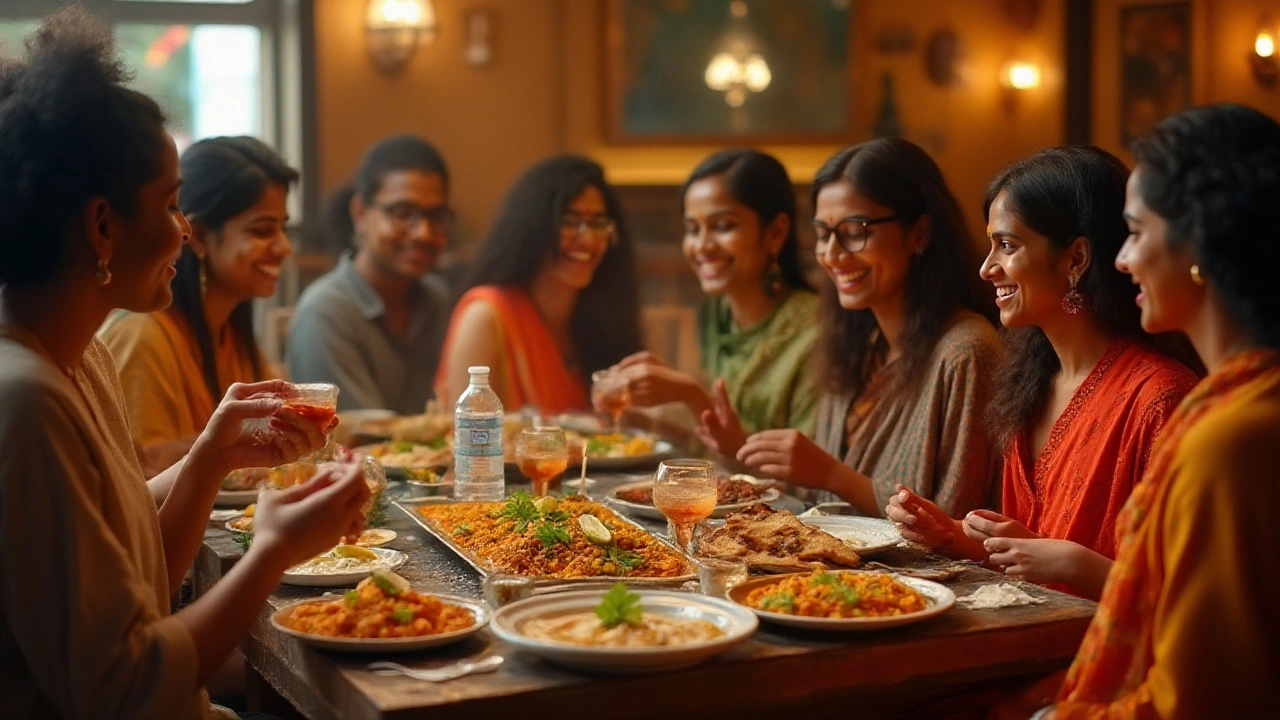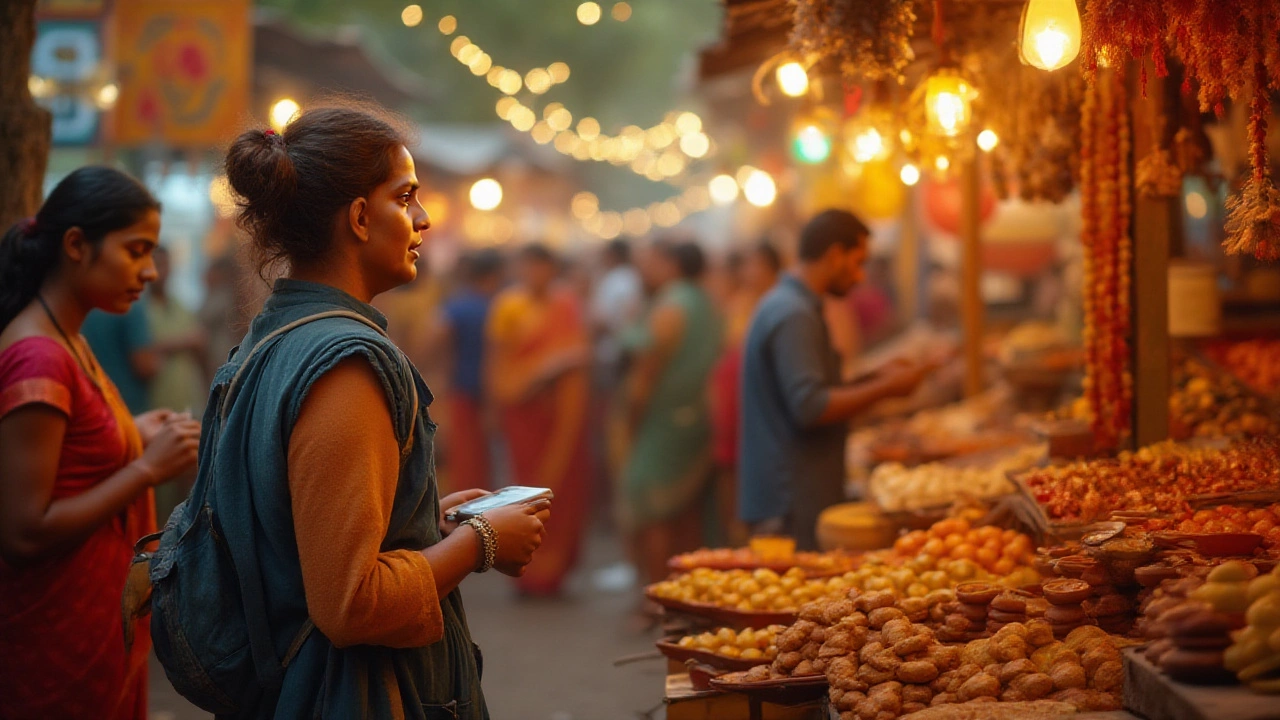There’s nothing like landing in India, stepping right into a swirl of spices, honking autos, and crowded food stalls. The colors, the noise—and above all, the smells of street food wafting across every corner. But here’s a fact that takes even seasoned travelers off guard: up to 50% of first-time visitors to India end up with a stomach upset or worse. The dreaded “Delhi belly” is the punchline every traveler hears, but the risk is real. So, does enjoying India’s legendary food mean gambling with your stomach? Absolutely not! You just need to be smart about what you eat, where you eat, and how you eat. Let’s cut through scary rumors and look at how you can taste India without losing a day to the bathroom.
Understanding Food Safety Challenges in India
Sure, India is famous for flavors, but it also has a reputation for foodborne bugs. The reasons are layered. For one, India’s hot climate is almost custom-built for bacteria and viruses to multiply quickly in poorly handled food. Chilling and refrigeration aren’t always guaranteed, especially in smaller towns or at open-air markets. Tap water, sadly, isn’t reliably clean even in top hotels—forget street-side stalls. Fruits and veggies often get rinsed or soaked in untreated water. And while most locals develop immunity over a lifetime, visitors take time to adjust.
Of course, hygiene standards swing wildly. In big cities, many restaurants follow modern practices. But in smaller dhabas, or roadside food joints, the lack of soap, running water, or even refrigeration can create risks. Unpasteurized milk and open-air dairy products add another layer of hazard, especially for travelers used to western standards. You also have different bacteria to worry about: E. coli, Salmonella, even more rare stuff like typhoid or hepatitis A. The risk isn’t just about “bad” food; it’s about how quickly bacteria can multiply if food is left out—even in the shade during the afternoon.
Numbers have stories to tell. A 2023 study found that as many as 40 million cases of foodborne illness are reported in India annually. Gastroenteritis from contaminated food or water is high on the list for travelers under 40. But—don’t panic—most cases, even those picked up by travelers, are mild and clear up within 48 hours with rest and hydration. Only rarely do tourists get seriously ill, but the odds rise if you don’t pay attention to what, where, and how you eat.
Keeping this all in mind sets you up for success. When it comes to your food adventure, it’s not about being afraid of everything. It’s about keeping your eyes open, knowing the risks, and making simple, smart choices every single meal.
Best Foods to Eat Safely in India
Let’s jump past the scary part—yes, you can really eat well in India without curling up in a hotel bathroom. The trick? Go for the stuff locals trust and methods that kill bugs. First up is hot, freshly cooked food. Any dish served steaming from the pan or oven is usually your safest bet. The high temperature wipes out risky bacteria and viruses. Curries aren’t just delicious—they boil away trouble, making beloved classics like butter chicken, dal (lentils), and paneer tikka surprisingly reliable. Most Indian breakfasts—think idlis (steamed rice cakes), dosas (crispy fermented rice pancakes), and poha (spiced flattened rice)—are also cooked just before serving.
If you’ve got a sweet tooth, you’re not left out: stick to hot halwa (a dense, sweet pudding) or freshly made jalebi (fried and dunked in syrup while still hot). Skip open pastry displays sitting under flies all afternoon. Here’s a wild fact: more Indians trust instant noodles and fried snacks (like samosas) to be safer than salads. Why? Oil heats up to over 180°C, destroying most pests in a flash.
Bottled water is non-negotiable. Even small sips from a hotel tap can cause trouble. That includes brushing your teeth—use bottled or filtered water. Most top hotels filter their water rigorously, but in your room or in restaurants, check that bottles arrive sealed. If you’re drinking chai (and why wouldn’t you?), choose it piping hot, not lukewarm.
- Look for busy food joints. Crowds mean food turns over fast, so there’s less time for bacteria to multiply.
- Try fruits with peels you remove yourself: bananas, oranges, mangoes. Toss out anything pre-cut or exposed to air.
- If you’re craving street food, pick items that are deep-fried or grilled right in front of you—pakoras, kebabs, or vada pav (Mumbai’s famous spicy potato burger).
- In sit-down places, request hot (boiled) water for tea. You’ll see locals doing it too—no shame!
- Buffets look tempting, but only if you see the food coming out fresh, not drying up under lukewarm lamps for hours.
Worried you’ll miss out on salads and yogurt? Many high-end cafes and hotels wash greens in purified water—just ask how they prep dishes. Yogurt is actually a gut-saver: grab sealed, branded packs if you’re unsure about homemade dahi.

Foods and Habits to Avoid
Don’t kill the messenger, but there are a few “don’ts” that’ll save your trip—and your dignity. Salad bars can be dodgy unless you’re at a trusted, international-standard spot. Raw veggies often sit in iffy water before they get plated. Skip the temptation of lassi (yogurt drink) from roadside stands unless you see it made with pasteurized milk in front of your eyes. Same goes for ice: if it’s not from a sealed, trusted place, it might be tap water frozen into cubes. That’s a stomach ache waiting to happen.
Street food is legendary, but not all of it is safe. If the stall is empty, food’s been sitting around or the vendor uses bare hands, give it a pass. Look for ones that grill, steam, or fry while you wait. Avoid anything pre-mixed (like fruit chaat) or drinks that aren’t opened in front of you. Packaged cold drinks and branded juices are usually fine, but make sure the seal is intact before sipping.
Unpasteurized milk or curd can unleash all kinds of nasties unless you know the source. Eggs, too, should be thoroughly cooked—no runny yolks or half-boiled surprises! If you’re up north or in hill stations, look out for paneer (cheese) that stays out all day—fresh is best, but when in doubt, skip it.
And about habits—don’t touch your face or food unless your hands are squeaky clean. Wash them religiously before every meal and use sanitiser on the go. Be picky with buffets, especially ones served outdoors. Check this out: in hospitality industry audits conducted in Delhi and Mumbai, buffet trays failed safety checks almost 30% more often than plated orders in high-traffic restaurants.
| Food/Drink | Risk Level | Safer Alternative |
|---|---|---|
| Tap Water | Extremely High | Bottled/Filtered Water |
| Salads | High | Cooked/Veggies with peel |
| Street Lassi | Moderate to High | Branded Yogurt Drink |
| Ice | High | No Ice/Sealed Drink |
| Buffet | Oddly High | Freshly Cooked Orders |
Remember, prevention trumps cure. The biggest favors you can do your stomach are clean hands, bottled water, and letting your nose decide—a sour smell or a weird taste, don’t be shy to leave it!
Real-Life Hacks and How Locals Dodge Getting Sick
Locals eat on the street every day and walk away just fine. What’s their secret? It’s not just iron guts, but habits picked up over years. For one, they scope out the busiest, noisiest street vendors—the stall with five people waiting is usually safer than the empty one next door. Some carry their own cutlery and water when they travel. Here’s a fun fact: among middle-class Indian families, grandmothers often make a test visit to a new vendor before letting kids eat anything from there. Talk about quality control!
Travelers can borrow a few tricks. Try probiotics before your trip to build gut strength. Rest days help; schedule lighter meals or stick to simple khichdi—rice and lentils—on travel-heavy days. When in doubt, don’t be shy to ask locals for their favorite spots. Many cities, like Mumbai and Bangalore, have thriving social media groups reviewing street food in real time, flagging unsafe stalls after visible hygiene lapses. Don’t be a hero—skip food challenges or weird local delicacies unless you’re dead sure about the sourcing and prep.
- Ask hotel staff or hosts where they eat lunch—not where they send tourists.
- Watch vendors at work. Gloves, tongs, and clean aprons are good signs. Dirty nails or double-dipping? Walk away.
- Carry travel packs of tissue and hand sanitizer—public toilets often lack soap and running water.
- If you’re really sensitive, invest in a water bottle with a built-in filter (lots use these now).
- Don’t consume anything with raw, unrefrigerated cream, eggs, or dairy—festival sweets like ras malai at outdoor stalls are a no-go in hot weather.
If you do get sick, don’t panic. Symptoms like mild cramping or loose motions usually ease off in a couple of days with rest, hydration (with oral rehydration salts), and a simple diet. But if you notice blood, high fever, or non-stop vomiting, seek medical attention—every city has reliable clinics and top-notch pharmacies.
You don’t have to avoid everything fun to stay healthy—just use common sense, stay alert, and let your eyes (and your nose) do half the work. Many travelers report that after a cautious first week, their stomachs settle and they can expand their food adventures, still staying safe. The last thing you want is to miss out on the *best* of Indian food by being too scared. Get out there, be smart, stay flexible, and let your taste buds have some fun.
